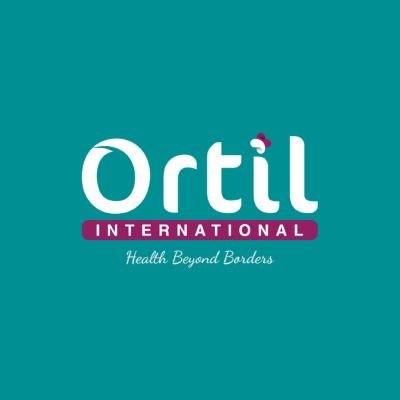
Benign Prostatic Hyperplasia (BPH), commonly known as prostate enlargement, is a widespread health issue affecting millions of men worldwide, particularly those over the age of 50. This non-cancerous condition causes the prostate gland to grow, compressing the urethra and leading to troublesome urinary symptoms such as frequent urination, weak urine flow, difficulty starting and stopping urination, and a feeling of incomplete bladder emptying. When conservative treatments such as medications fail to improve these symptoms, surgery becomes necessary.
Transurethral Resection of the Prostate (TURP) is regarded as the gold standard surgical procedure for managing BPH. India has become an increasingly popular destination for TURP surgery due to its highly skilled urologists, modern healthcare infrastructure, and cost-effective treatment options. This article explores the TURP procedure, benefits, recovery, and why India is a preferred choice for this surgery globally.
Understanding Benign Prostatic Hyperplasia (BPH)
The prostate is a small gland located beneath the bladder in men and surrounds the urethra. Its primary function is to produce seminal fluid, which nourishes and transports sperm. With advancing age, the prostate gland tends to enlarge in many men, a condition known as BPH. This enlargement compresses the urethra, obstructing urine flow and causing a spectrum of lower urinary tract symptoms (LUTS).
Common symptoms of BPH include:
- Increased frequency of urination, especially at night (nocturia)
- Difficulty initiating urination
- Weak or interrupted urine stream
- Sensation of incomplete bladder emptying
- Urgency to urinate
- In some cases, urinary retention which is a medical emergency
What is Transurethral Resection of the Prostate (TURP)?
TURP is a minimally invasive surgical technique used to relieve the symptoms of BPH by removing excess prostate tissue that compresses the urethra. Unlike open prostatectomy, TURP does not require external incisions, which significantly reduces recovery time and risk of infection.
During the TURP procedure, a thin, tubular instrument called a resectoscope is inserted through the urethra to the prostate. The surgeon uses an electric loop to cut away excess prostate tissue, which is then flushed out. This enlarges the urethral passage, improving urine flow and reducing symptoms.
When is TURP Recommended?
TURP is generally recommended when:
- BPH symptoms are severe and unresponsive to medication
- There is recurrent urinary retention requiring catheterization
- Bladder stones develop due to incomplete bladder emptying
- Recurrent urinary tract infections occur
- Kidney function is affected due to urinary obstruction
TURP Surgery Procedure
- Preoperative Evaluation: Includes blood tests, urine tests, ultrasound imaging, and sometimes cystoscopy to assess the prostate size and bladder function.
- Anesthesia: Usually performed under spinal or general anesthesia.
- Surgical Process: The resectoscope is inserted through the penis into the urethra. The surgeon carefully removes obstructing prostate tissue in small chips using an electric loop. The procedure typically lasts 60-90 minutes.
- Hospital Stay: Patients generally stay 1-3 days in the hospital for monitoring and catheter care.
Advantages of TURP Surgery in India
- Highly Skilled Surgeons: India boasts many urologists trained at internationally reputed institutions, experienced in both traditional and laser TURP techniques.
- State-of-the-Art Facilities: Top Indian hospitals have advanced endoscopic equipment ensuring precise, safe surgery.
- Cost-Effective Treatment: TURP surgery in India can cost between $1,500 to $4,000, which is significantly lower than costs in the US, UK, or Europe (where it may exceed $15,000 to $20,000).
- Comprehensive Medical Tourism Services: Hospitals offer end-to-end care including travel assistance, accommodation, interpreters, and post-operative rehabilitation support.
- Minimal Waiting Time: Unlike many Western countries where patients might wait weeks or months, Indian hospitals offer timely scheduling of surgery.
- Personalized Patient Care: Indian hospitals focus on patient comfort, education, and a multidisciplinary approach to management.
Recovery and Post-Operative Care
- After TURP, patients usually have a catheter in place for 1-3 days to help urine drainage and allow the urethra to heal.
- Initial urine may be pinkish due to mild bleeding but clears within a few days.
- Patients are advised to drink plenty of fluids and avoid strenuous activity for at least 4-6 weeks.
- Mild burning during urination and increased urinary frequency are common initially but improve gradually.
- Follow-up visits are crucial to monitor healing, remove the catheter, and check for complications.
Potential Risks and Complications
Though TURP is generally safe, it carries some risks, including:
- Bleeding during or after surgery
- Urinary tract infections
- Temporary difficulty urinating
- Retrograde ejaculation (semen flows backward into the bladder instead of out)
- Rarely, urethral stricture or bladder neck contracture
- Very rarely, erectile dysfunction or urinary incontinence
Most of these risks are minimized with skilled surgical technique and proper post-operative care.
Why International Patients Choose India for TURP Surgery
India has become a hub for medical tourism for urological surgeries like TURP due to:
- Affordable yet high-quality care: Patients can access world-class facilities and surgeons at a fraction of the cost.
- Multilingual support: Many hospitals provide translators and coordinators for international patients.
- Ease of travel: India’s major cities have international airports with easy access to hospitals.
- Holistic experience: Patients can combine treatment with recovery in India’s cultural and scenic locations.
Conclusion
Transurethral Resection of the Prostate (TURP) surgery is an effective, safe, and minimally invasive procedure that significantly improves the quality of life for men suffering from prostate enlargement. India stands out as a premier destination for TURP surgery due to its blend of expert surgeons, cutting-edge technology, affordable costs, and patient-centric services. For those seeking prompt, reliable, and economical treatment for BPH, India offers comprehensive care that meets international standards. By choosing India for TURP surgery, patients benefit not only from world-class medical expertise but also from the warm hospitality and holistic recovery environment the country provides.

